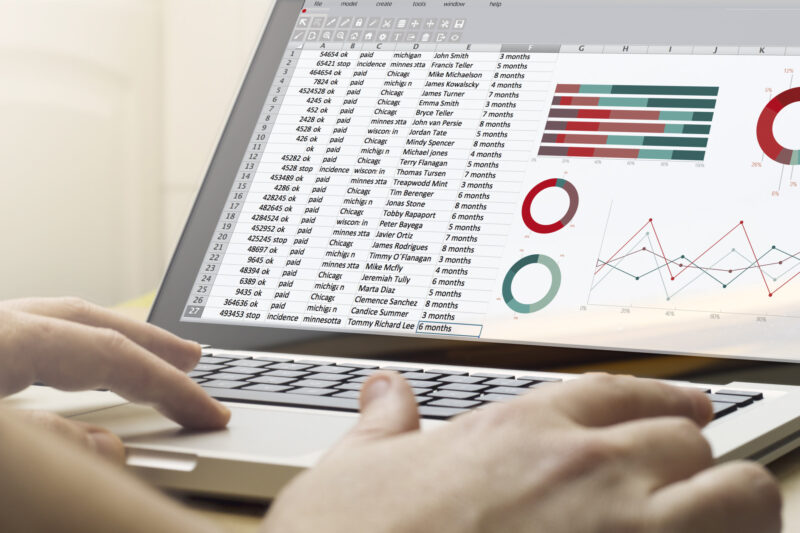Are you tired of going month to month without a plan to manage your money? If so, you aren’t the only person in this situation. Believe it or not, only 30% of all United States households have a long-term plan for their money.
The question is, can you use a financial app to create a plan for success?
If you plan on using a financial planning app, it pays to know how to make the most of the program. Keep reading to learn six ideas that will help you when personal financial planning.
1. Create a Budget
Once you have your financial planning app up and running, you should have an easy overview of all your income and expenses. Many people go by not tracking this data and playing things by ear. However, doing this won’t give you a plan to grow your wealth and prepare for the future.
Look through your financial transactions in your app to see your income and expenses. Many apps provide an overview showing how much you make and spend every month to make things easier.
Use this data to figure out how much money you need to spend every month and how much you need to save. Create a budget to meet that goal, and keep watching your finances every month to ensure you stay on top of your budget.
2. Monitor Your Expenses
While you may not get around paying your bills, the chances are good that you have some expenses you don’t need. While having some money for entertainment isn’t a bad thing, you can’t let your excess spending go too far.
Look through all your expenses and look for purchases you don’t need. If you find things you regularly use in your expenses, it may make sense to keep those purchases. However, cut any purchases you don’t plan to use and buy just to have around.
Doing this every month will help keep your spending down and save more money. You can then invest this money or save it up for a more important purchase in the future.
3. Look for Investable Money
It isn’t enough to have a lot of money in your bank account these days. Your banking provider will provide a tiny amount of interest for your money. It makes more sense to take your savings and invest them into assets that will grow your money.
Look at how much extra money comes into your bank account every month in your financial software. Your goal is to take some of this income and put it into investable assets. The only thing you need to keep in mind is that you need to keep some money back for emergencies and potential purchases in your future.
The most straightforward way to go about this is to invest in index funds. As your investments grow over time, you’ll get income from dividends and more money as time goes on, and your stock portfolio increases in value.
4. Look for Spending Trends
Do you find yourself with a lack of money during certain times? Believe it or not, there are likely things you do at certain times that make it harder for you to manage your finances.
Whether it’s regular trips to an expensive restaurant or routine shopping trips, you likely have spending behavior you do on a schedule. You can use your financial app to spot these things and figure out what to do from there.
If those spending habits are beneficial for your life, you don’t need to change a thing. However, if these are things you don’t need, then make those spending habits less regular to start saving more money. Knowing when you need to spend money during the month will help you time things right and run not get into situations where you’re pressed for cash.
5. Look for Unused Subscriptions
One of the great things about financial apps is that they can tell you all your history for a specific business. Take streaming services, for instance. You can click on a transaction with a company to show you all your history with that company and your total spending.
A long subscription history isn’t a problem if you use the service. However, many people stay subscribed to products and services without using them regularly. You waste all that money when you don’t use those services.
Use your financial app to find subscriptions you don’t use and cut them from your spending.
6. Find Bills That Keep Going Up
Unfortunately, your bills won’t stay the same price forever. As time goes on, you’ll see your cable bill, insurance rates, and several other things go up in price. The problem is that you aren’t always aware of when this happens.
That makes it important to track rate increases in your financial app and look for ways to reduce your bills.
Take insurance, for instance. When you notice an insurance payment increase, start reaching out to other insurance companies to get quotes. More often than not, you can find a provider that can provide the same benefits for a lower rate.
Do this for each of your bills. You may not be able to reduce your bills in all cases, but the chances are good that you can find savings somewhere.
Make Use of Every Feature of a Financial Planning App
A financial planning app is only as good as the work you put in to use it. Without a solid plan for financial planning, anything you use won’t be effective at helping you get your finances in shape. Use the tips above to make the most of your new financial planning software.
Are you interested in learning more tips that will help you better control your finances? Check out the blog to see more financial planning tips.






